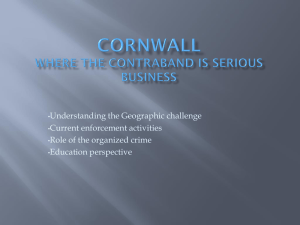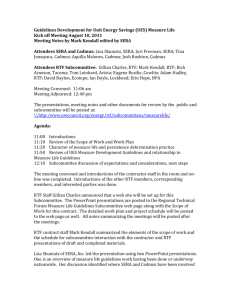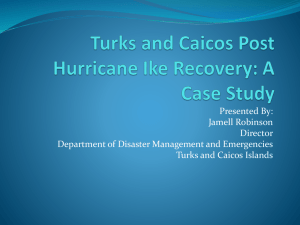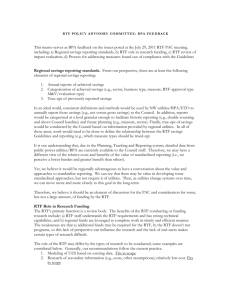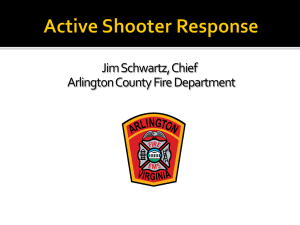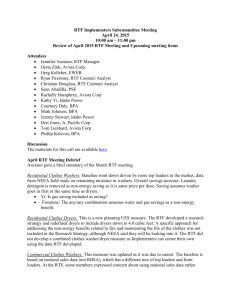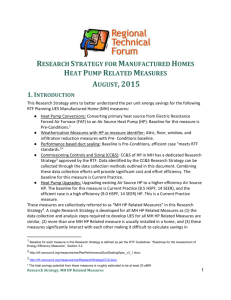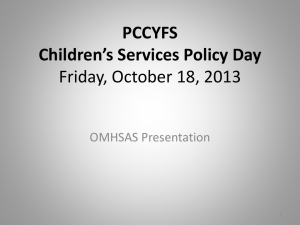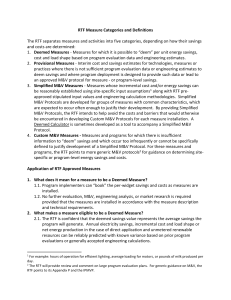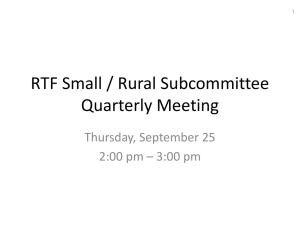Notes
advertisement
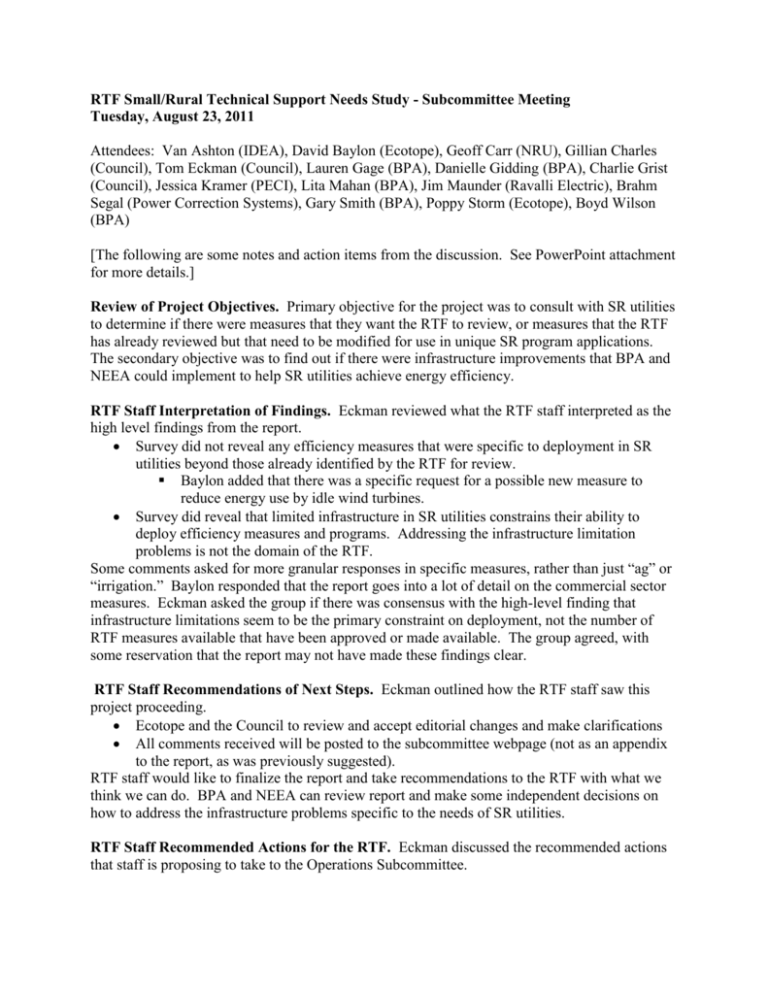
RTF Small/Rural Technical Support Needs Study - Subcommittee Meeting Tuesday, August 23, 2011 Attendees: Van Ashton (IDEA), David Baylon (Ecotope), Geoff Carr (NRU), Gillian Charles (Council), Tom Eckman (Council), Lauren Gage (BPA), Danielle Gidding (BPA), Charlie Grist (Council), Jessica Kramer (PECI), Lita Mahan (BPA), Jim Maunder (Ravalli Electric), Brahm Segal (Power Correction Systems), Gary Smith (BPA), Poppy Storm (Ecotope), Boyd Wilson (BPA) [The following are some notes and action items from the discussion. See PowerPoint attachment for more details.] Review of Project Objectives. Primary objective for the project was to consult with SR utilities to determine if there were measures that they want the RTF to review, or measures that the RTF has already reviewed but that need to be modified for use in unique SR program applications. The secondary objective was to find out if there were infrastructure improvements that BPA and NEEA could implement to help SR utilities achieve energy efficiency. RTF Staff Interpretation of Findings. Eckman reviewed what the RTF staff interpreted as the high level findings from the report. Survey did not reveal any efficiency measures that were specific to deployment in SR utilities beyond those already identified by the RTF for review. Baylon added that there was a specific request for a possible new measure to reduce energy use by idle wind turbines. Survey did reveal that limited infrastructure in SR utilities constrains their ability to deploy efficiency measures and programs. Addressing the infrastructure limitation problems is not the domain of the RTF. Some comments asked for more granular responses in specific measures, rather than just “ag” or “irrigation.” Baylon responded that the report goes into a lot of detail on the commercial sector measures. Eckman asked the group if there was consensus with the high-level finding that infrastructure limitations seem to be the primary constraint on deployment, not the number of RTF measures available that have been approved or made available. The group agreed, with some reservation that the report may not have made these findings clear. RTF Staff Recommendations of Next Steps. Eckman outlined how the RTF staff saw this project proceeding. Ecotope and the Council to review and accept editorial changes and make clarifications All comments received will be posted to the subcommittee webpage (not as an appendix to the report, as was previously suggested). RTF staff would like to finalize the report and take recommendations to the RTF with what we think we can do. BPA and NEEA can review report and make some independent decisions on how to address the infrastructure problems specific to the needs of SR utilities. RTF Staff Recommended Actions for the RTF. Eckman discussed the recommended actions that staff is proposing to take to the Operations Subcommittee. Include a screening mechanism in the RTF guidelines when making decisions on measures and specifications to ensure SR deployment is taken into consideration. Allocate staff/consultant time to advise packages of measures for SR utilities that don’t have the institutional capability to devise and implement them on their own (i.e. Montana House). Ashton noted that there should be a system to collect and screen SR measure ideas periodically. Moving forward - how to deal with comments and edits. The subcommittee addressed how to incorporate the comments and edits into the report. The subcommittee was not in favor of spending a great deal of additional funding into rewriting the report, however it was agreed that several changes could be made to strengthen the final report and make clarifications that would satisfy many of the comments. Clarify the number of utilities in survey responses and report - rather than “75 percent” say “3 of 4 utilities who answered this question said x” Clarify the author of recommendations - is it a utility or a contractor recommendation? Add a paragraph clearly identifying the scope of the project, noting that this was an interview with only a small number of utilities from a subset of 70+, and did not include research/interviews with BPA, NEEA, non-utility delivery agents, retailers, vendors, etc. It was a process study that clearly didn’t address a full scale evaluation of all the actors and moving parts. Clarify the tone and authorship of the paper Garner specificity from Ecotope as to which measures were requested by SR utilities. Zoom out on utility map on page 10 Ensure the executive summary clearly lists the recommendations Next Steps. RTF staff will work with Ecotope on revisions (editorial vs. substantive) to report Charles will post all the comments received on the subcommittee webpage Next few weeks, there will be another subcommittee meeting for Ecotope and the commenters to get together and ensure that concerns are being addressed.
